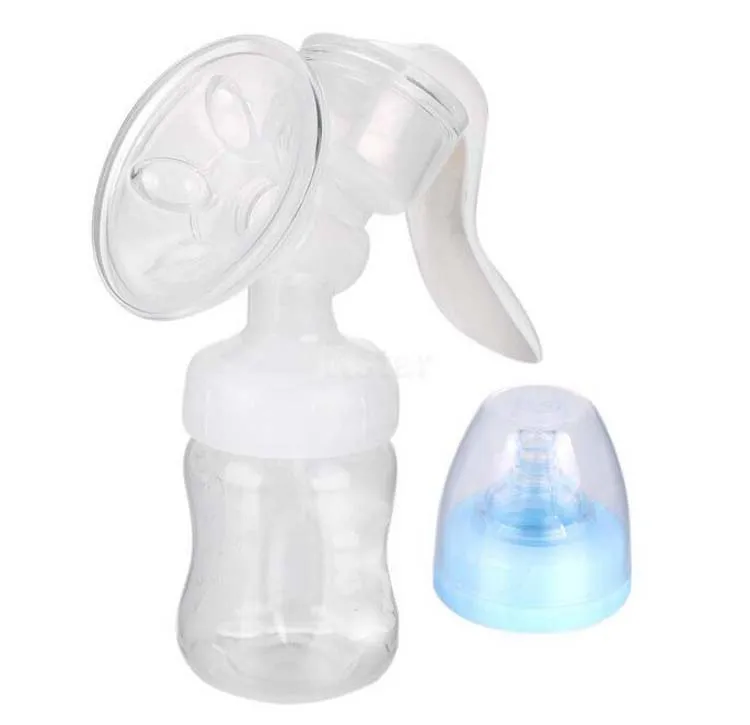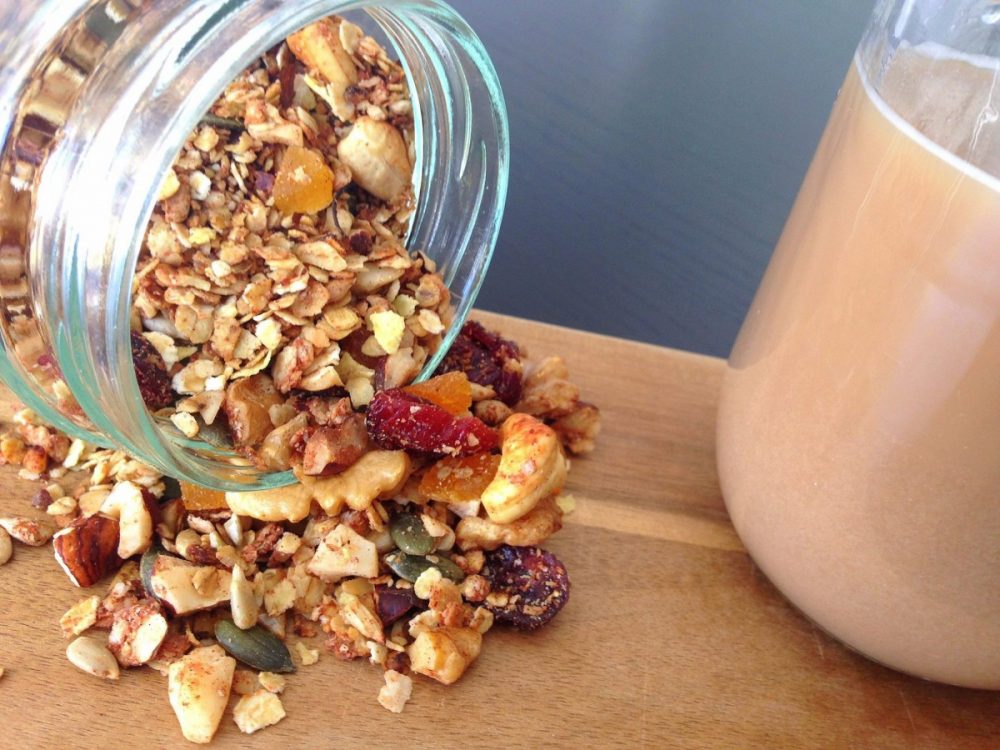Canada food guide babies
Feeding your baby in the first year
Feeding your baby in the first year of life is an exciting adventure for parents and babies alike. It’s about development, nutrition, curiosity, sharing and learning. Attachment also grows as you go about your daily routine with your baby.
You can help your baby develop a lifetime of healthy eating habits with the right start.
The first 6 months
For the first 6 months of life, breastfed babies will get what they need from their mother’s milk.
- Babies who are exclusively or partially breastfed should get a daily supplement of vitamin D, which is available as drops.
- Breast milk has the right amount and quality of nutrients to suit your baby’s first food needs.
- Breast milk also contains antibodies and other immune factors that help your baby prevent and fight off illness.
If breastfeeding is not an option, use a store-bought iron-fortified infant formula for the first 9 to 12 months.
- Formula should be cow milk-based.
- Homemade formulas made from canned, evaporated, whole milk (cow or goat), or any plant-based beverage, are not recommended as a breast milk substitute.
- Homemade formulas can contain harmful germs and lack important nutrients that can make your baby sick.
- Rice, soy, almond or other plant-based beverages, even when fortified, are not appropriate as a breastmilk substitute as they are nutritionally incomplete for infants. There is no evidence that soy-based formula will prevent your child from developing an allergy.
- Soy-based infant formulas should only be used as an alternative to cow milk-based formula if your baby has galactosemia (a rare disorder that will affect how your baby’s body processes simple sugar) or if your baby cannot consume dairy-based products for cultural or religious reasons.
- Talk to your doctor if you are unsure which formula is best for your child.
If your baby has allergies, or if allergies run in the family, see below for specific recommendations about when and how to introduce allergenic foods (such as eggs or peanuts).
Introducing solid foods
At about 6 months, most babies are ready for solid foods. Along with other foods, you can continue to breastfeed as long as it is comfortable for you and your baby, even well into the toddler years.
You’ll know baby is ready to start other foods when they:
- Can sit up without support, lean forward, and have good control of their neck muscles.
- Ability to pick up food and try to put it in their mouth.
- Hold food in their mouth without pushing it out with their tongue right away.
- Show interest in food when others are eating.
- Open their mouth when they see food coming their way.
- Can let you know they don’t want food by leaning back or turning their head away.
Remember that all babies are different. Some babies may be ready a few weeks before or just after 6 months. However, waiting after 6 months to introduce other foods increases your baby’s risk of iron deficiency.
What foods should we start introducing our baby to first?
There are many ways to introduce solid food. The first foods usually vary from culture to culture and from family to family.
The first foods usually vary from culture to culture and from family to family.
Start with foods that contain iron, which babies need for many different aspects of their development. Meat, poultry, cooked whole egg, fish, tofu, and well-cooked legumes (beans, peas, lentils) are good sources of iron. Store-bought iron-fortified infant cereals such as oat, wheat, barley or rice are also common first foods because they are good sources of iron. Offer iron-rich foods at least twice per day.
Healthy foods that your whole family is eating are the best choice for your baby. You can use commercial baby foods, but read the label to ensure there is no added salt or sugar. A variety of textures (such as lumpy, tender-cooked and finely minced, puréed, mashed or ground), and soft finger foods are recommended. As baby gets older, offer foods with more texture.
| First foods - Around 6 months | |
|---|---|
| Iron-rich foods | Puréed, minced, diced or cooked meat, fish, chicken, tofu, mashed beans, peas or lentils, eggs, iron-fortified infant cereal. |
| After 6 months | |
| Grain products | Iron-fortified infant cereal, small pieces of dry toast, small plain cereals, whole grain bread pieces, rice and small-sized pasta. |
| Vegetables | Puréed, mashed, lumpy or pieces of soft cooked vegetables. |
| Fruit | Puréed, mashed or lumpy soft fruit. Pieces of very ripe soft fresh fruit, peeled, seeded and diced or canned fruit (not packed with syrup). |
| Milk products | Dairy foods like full-fat yogurt, full-fat grated or cubed pasteurized cheeses, cottage cheese. |
| 9 to 12 months | |
| Milk | Whole cow’s milk (3.25%) can be introduced if breastmilk is no longer available, between 9-12 months. After 12 months of age, your baby should not take more than 25 ounces (750 mL) of milk per day. |
Introducing common food allergens
You can start to introduce common allergenic foods—like peanut products or eggs—when you are starting your baby on other solid foods, usually around 6 months of age.
However, if your baby is at high risk of developing an allergy (has allergies such as eczema, or a parent or sibling with an allergic condition) you can start after baby is 4 months old, but not sooner. Talk to your doctor if you are unsure.
Waiting until after 6 months to try to prevent an allergy is not recommended.
- When introducing foods that are common food allergens, it’s best to offer no more than one new food per day. You may want to wait a day or two before you introduce another. This makes it easier to identify a food that may have caused a reaction.
- If your baby is tolerating the allergenic food, continue offering it a few times a week to maintain tolerance.
 If an allergic reaction occurs, contact your doctor.
If an allergic reaction occurs, contact your doctor. - Make sure these new foods are smooth and small enough so that your baby isn’t at risk of choking. When introducing peanut products to young infants, try mixing a bit of peanut butter with some water, breast milk, or a puréed fruit or vegetable that your baby has had before. For older infants, spread a bit of smooth peanut butter on a piece of thin toast crust or offer a peanut puff product.
How much should I feed my baby?
Follow your baby’s cues for how much to feed. Start by offering a teaspoon or two. Don’t rush. Some babies need to try a food many times before accepting it. If she’s not hungry, she’ll turn her head and close her mouth. If she’s hungry, she’ll get excited and open up.
Never trick or coax her to eat more by playing games or offering sweetened foods. Babies who are allowed to follow their own hunger cues are much less likely to overeat later in life.
Try foods with different tastes and textures to help your baby learn how to handle foods in her mouth.
Water and juice
Babies who are exclusively breastfed don’t need extra water. When your baby begins to eat other foods, you can start to offer water occasionally, in an open cup.
- Babies and children don’t need to drink juice. Too much juice can cause diarrhea and can fill up small stomachs, decreasing your baby’s appetite for nutritious foods. Too much juice can also cause early childhood tooth decay.
- Offer water to babies and young children between meals and snacks if they are thirsty. If you choose to offer juice, be sure it is only 100% fruit juice (with no added sugar). Limit juice to 125 mL (4 oz.) per day.
Are there any foods my baby shouldn’t eat?
- Babies shouldn’t be offered sugary drinks or foods, such as candies, soda/pop or energy drinks.
- Don’t give honey to babies under a year old, as there is a risk of infant botulism (food poisoning).
- If you have concerns, please speak to your health care provider.

Is there anything else I should know about feeding my baby?
- Always wash your hands before preparing your baby’s food, and wash your baby’s hands before they eat.
- Wipe your baby’s gums with a soft, damp cloth twice a day for good oral health.
How can I prevent choking?
Young children don’t know how to chew food into tiny pieces. And they haven’t learned how to bring a piece of food back up when it gets caught going down. Foods most likely to cause choking are small, round or cylindrical in shape, like hot dogs, whole grapes, carrot slices, seeds and hard candy.
To protect your baby:
- Always supervise them while they are eating.
- Make sure your baby is sitting down to eat.
- Grate raw vegetables such as carrots to make them easier to chew.
- Cook hard fruits and vegetables to soften them.
- Slice round foods such as hot dogs or grapes lengthwise.
- Remove pits from fruits.
- Chop or scrape stringy meat and add broth to moisten it.

- Spread sticky foods like nut butters thinly on a cracker or toast rather than bread.
- Don’t feed your baby whole nuts, raisins, popcorn, gummy candies, hard candy, or fish with bones.
Developmental milestones related to feeding
| Age | Physical milestones | Social milestones |
|---|---|---|
| Birth to 4 months |
|
|
| 4 to 6 months |
|
|
| 6 to 9 months |
|
|
| 9 to 12 months |
|
|
| 12 to 18 months |
|
|
| 18 to 24 months |
|
|
More information from the CPS
Additional resources
Reviewed by the following CPS committees
- Allergy Section
- Nutrition and Gastroenterology Committee
- Public Education Advisory Committee
Last updated: January 2020
Introducing Solid Foods to Your Baby
Topic Contents
- Topic Overview
- Related Information
- References
- Credits
Topic Overview
Canadian experts recommend giving only breast milk for the first 6 months and continuing to breastfeed for up to two years and beyond. footnote 1 Breast milk is the ideal food for babies. If you are not able to breastfeed your baby, feed your baby iron-fortified formula. Babies don't need any other liquids or solids for the first 6 months of life.
footnote 1 Breast milk is the ideal food for babies. If you are not able to breastfeed your baby, feed your baby iron-fortified formula. Babies don't need any other liquids or solids for the first 6 months of life.
Breastfed babies and babies fed a combination of breast milk and formula need 400 IU of vitamin D each day from a supplement.footnote 1, footnote 3 Babies who are fed only formula do not need a vitamin D supplement.
Your baby is ready to start eating solid foods at 6 months of age, which is around the time he or she:
- Demonstrates a curiosity about solid foods and your family's eating behaviour.

- Has started to transition from using the sucking reflex to swallowing and does not push a spoon or other object out with the tongue when it is placed in the mouth.
- Can sit with support.
- Has good head and neck control.
When your baby is ready to start eating solid foods, keep these general guidelines in mind:
- Continue to offer breast milk or formula while introducing solid foods.
- Offer your baby iron-rich foods first, such as iron-fortified infant cereal, finely minced meat or fish, mashed cooked egg yolk, mashed beans, or tofu.
- The order in which other foods from Canada's Food Guide are introduced is not important.
- Don't add cereal to bottles. Instead, spoon-feed your baby cereal that is made with breast milk, formula, or water, gradually making the mixture thicker.

- As the variety in your baby's diet increases, include foods rich in vitamin C—such as oranges, berries, tomatoes, and spinach—along with iron-rich foods. Vitamin C helps your baby absorb iron.footnote 4
- Observe your baby before introducing another new food. This strategy helps you quickly identify a food that may be causing a reaction, such as hives, redness, a rash, vomiting, or diarrhea.
- If you have a family history of allergies, talk to a dietitian or health care provider. Experts do not recommend waiting to introduce any foods in order to prevent allergy. This includes the common allergens such as peanut, tree nuts, egg, milk product (yogurt, cheese), wheat, soy, seafoods, and sesame. You can start offering these foods to your baby at around 6 months.
- Introduce these foods one at a time. This will help you quickly identify whether a food is causing a reaction such as hives, swelling, redness, and a rash.
- If you think your baby has had an allergic reaction to a food, stop offering it and talk to your baby’s doctor.

- Offer your baby a variety of foods with soft textures. He or she can eat food that is lumpy, tender-cooked and finely minced, pureed, mashed, or ground. Offer finger foods like dry cereal, crunchy toast, well-cooked noodles, small pieces of chicken, cooked egg, and small chunks of banana. Make sure that there are no pieces that could cause your baby to choke such as hard raw vegetables (such as carrots), whole nuts and seeds and lumps of nut butters, popcorn, raisins, candies, and marshmallows.
- Don't feed your baby directly from a food container. Instead, put some of the food onto a small dish. That way, germs from your baby's mouth won't get into the container and spoil the food that is left.
- When you first start, don't choose foods with mixed textures, such as broth with vegetables. These kinds of meals are the hardest for a baby to eat.
- Offer an open cup for liquids other than breast milk or formula. Your baby can use a cup with your help starting around 6 months of age.
 Work toward a goal of not using a bottle or sippy cup by 12 to 18 months of age.
Work toward a goal of not using a bottle or sippy cup by 12 to 18 months of age. - When your baby is no longer breastfeeding or taking formula, your doctor may recommend a vitamin D supplement. Talk with your doctor about how much and what sources of vitamin D are right for your baby.
- When your baby is 9 to 12 months old and eating a variety of iron-rich foods, he or she can start to drink pasteurized whole-fat cow's milk. Limit cow's milk to no more than 3 cups (750 mL) per day for children 9 to 24 months old. If you are not breastfeeding and do not want to give your child cow's milk, give your child soy infant formula until your child is 2 years of age. After age 2, you can serve low-fat milk or fortified alternatives.
- Other kinds of milk such as skim milk, 1% milk, or 2% milk, or fortified soy beverage don't have as many nutrients as whole-fat cow's milk. It is best not to give your baby these beverages, until he or she is 2 years of age.
- Food's made from milk such as yogurt and cheese can be introduced at 6 months as long as your baby is eating a variety of iron-rich foods.

Keep these things in mind, too:
- Always stay with your baby when he or she is eating or drinking.
- Don't add salt or sugar to your baby's food.
- Don't give your baby honey until 1 year of age.
- Don't give your baby sugary drinks or foods.
- Juice is not necessary for a healthy diet. Juice does not have the valuable fibre that whole fruit has. Unless the label says the drink has only 100% juice, beware that many fruit drinks are just water, a little juice flavouring, and a lot of added sugar. The Canadian Paediatric Society recommends limiting juice to ½ cup (125 mL) of 100% unsweetened fruit juice a day. Juice isn't recommended for babies 0 to 6 months.
As you introduce new foods, it is important to pay attention to your baby's cues. When your baby's head turns away from a spoonful of food, don't force it. But try again later. Let your baby tell you when he or she is full. Also, it may help to introduce new foods when your baby is well rested and there are no distractions, such as a TV.
When your baby's head turns away from a spoonful of food, don't force it. But try again later. Let your baby tell you when he or she is full. Also, it may help to introduce new foods when your baby is well rested and there are no distractions, such as a TV.
As your baby learns to feed himself or herself, keep in mind that your job is to provide a variety of nutritious foods, but your baby will decide how much to eat. If your baby doesn't accept a new food right away, try again later. It can take many tries before your child accepts a food.
Your child can sit with you at the table for short periods of time during meals. Sharing meals with your child allows him or her see you eating a variety of foods, which makes it more likely that your child will also eat a variety of foods as he or she gets older.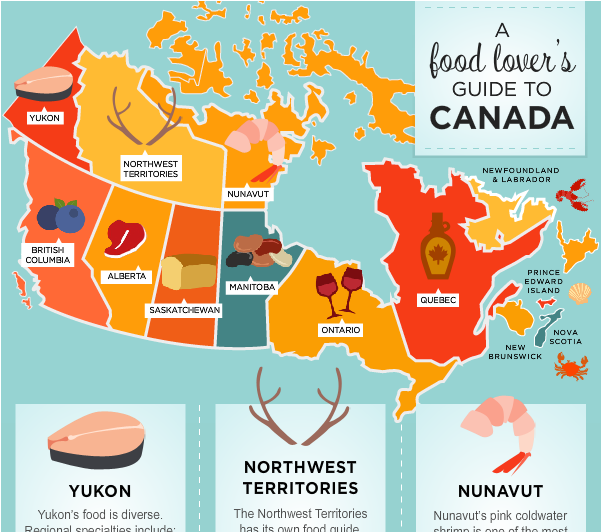 By 12 months, your child will be able to eat many of the same foods the rest of the family eats.
By 12 months, your child will be able to eat many of the same foods the rest of the family eats.
Expect messes
Your baby will quickly gain new eating skills, such as chewing, swallowing, and using cups and utensils, at about 6 to 12 months of age. Offer your baby a variety of nutritious foods and gradually allow him or her to explore different tastes and textures. Try to be patient as your baby experiments and learns, and be tolerant of messes. Your baby will likely enjoy playing with a spoon, but most of the food will fall off it. It's natural for your baby to "make a mess" while learning about food. Until your baby can handle a spoon better, you can give your baby a clean spoon to hold while you feed him or her with a different spoon.
To help reduce your cleanup, use a child's high chair that has a detachable tray and raised rims. The rims on the tray help keep dishes and food from sliding off. And you can carry the tray to the sink for cleaning. Cover the seat with a removable, washable pad. Also, think about covering the floor around the high chair. Remember—your child is learning by experimenting.
The rims on the tray help keep dishes and food from sliding off. And you can carry the tray to the sink for cleaning. Cover the seat with a removable, washable pad. Also, think about covering the floor around the high chair. Remember—your child is learning by experimenting.
References
Citations
- Health Canada, et al. (2012). Nutrition for healthy term infants: Recommendations from birth to six months. A joint statement of Health Canada, Canadian Paediatric Society, Dietitians of Canada, and Breastfeeding Committee for Canada. Available online: http://www.hc-sc.gc.ca/fn-an/nutrition/infant-nourisson/recom/index-eng.php.
- Health Canada, et al. (2014). Nutrition for healthy term infants: Recommendations from six to 24 months. Health Canada. http://www.hc-sc.gc.ca/fn-an/nutrition/infant-nourisson/recom/recom-6-24-months-6-24-mois-eng.php. Accessed April 28, 2014.
- Togias A, et al. (2017).
Addendum guidelines for the prevention of peanut allergy in the United States: Report of the National Institute of Allergy and Infectious Diseases-sponsored expert panel. Journal of Allergy and Clinical Immunology, 139(1): 29-44. DOI: 10.1016/j.jaci.2016.10.010. Accessed August 23, 2017.
- Chan E, et al. (2013). Dietary exposures and allergy prevention in high-risk infants. Canadian Paediatric Society. http://www.cps.ca/documents/position/dietary-exposures-and-allergy-prevention-in-high-risk-infants. Accessed February 12, 2014.
Other Works Consulted
- American Academy of Pediatrics (2010). Diagnosis and prevention of iron deficiency and iron-deficiency anemia in infants and young children (0–3 years of age). Pediatrics, 126(5): 1040–1050. Available online: http://pediatrics.aappublications.org/cgi/content/full/126/5/1040.
Credits
- About This Page
- General Feedback
- Email Link
- Physical Activity Services
We appreciate your feedback. Comments submitted through the form below can help us fix errors in page content, get rid of interface bugs, and update the HealthLinkBC website to better suit the needs of the people who use it.
Comments submitted through the form below can help us fix errors in page content, get rid of interface bugs, and update the HealthLinkBC website to better suit the needs of the people who use it.
To submit feedback about this web page, please enter your comments, suggestions, compliments or questions in the form below. To submit general feedback about the HealthLink BC website, please click on the General Feedback tab.
Page
Content
Functionality
Message:
Your name:
Your email:
To submit general feedback about the HealthLink BC website, please enter your comments, suggestions, compliments or questions in the form below. To submit feedback about a specific web page, please click on the About This Page tab.
Please note that we are unable to provide general health information or advice about symptoms by email. For general health information or symptom advice, please call us at 8-1-1 any time of the day or night.
For questions about food and nutrition, please click on Email a HealthLinkBC Dietitian.
What is your message about? -- Select --8-1-1 Telephone ServicesBC Health Service Locater AppBrand Name Food List (BNFL)Website ContentTechnical ProblemsPrint media requirements / Web buttonsOther
Message:
Your name:
Your email:
diary of a local resident ‹ engblog.ru
In my opinion, culinary tastes and traditions can tell about any country no less eloquently than architectural monuments and ethnographic museums.
Canadian culture is very diverse. It was formed by flows of immigrants from different countries and continents, because even after leaving their homeland, people often remain faithful to their national cuisine. Chinese, Japanese, Malaysian, Filipino, Mongolian, Korean, Greek, Italian, Turkish and, in fact, Canadian restaurants find their customers. Believe me, this list is far from complete. But with all this culinary diversity, there is something that unites people with its unpretentiousness and accessibility - these are hamburgers, chips and cola. nine0003
But with all this culinary diversity, there is something that unites people with its unpretentiousness and accessibility - these are hamburgers, chips and cola. nine0003
Attitudes towards food and cuisine in Canada
In our homes, the kitchen has a special room. In my opinion, this is a sign that cooking is an important and special part of our lives, just like sleep, communication, children. And the fact that a woman cooks at home is traditionally taken for granted.
In Canadian apartments or houses, the kitchen is part of the open space of a large room. Cooking in Canada is not given special importance, and, accordingly, a lot of time is not spent on it. On the balconies you can often see barbecues: you throw a piece of meat on the grate, and dinner is ready in 20 minutes. After work, you can stop by for dinner or take the ordered dinner with you. In any case, it will be inexpensive and can be quite acceptable for any budget. Women are not weighed down by the problem of family dinner. One of my Russian men I know “broke down” in wooing a Canadian woman, confessing that the lady of the heart “never had anything in the refrigerator except packs of chips and sauce.” nine0003
One of my Russian men I know “broke down” in wooing a Canadian woman, confessing that the lady of the heart “never had anything in the refrigerator except packs of chips and sauce.” nine0003
An invitation to visit often does not imply a richly laid table at all. pot luck is more accepted here - guests bring snacks and drinks with them.
Vancouverers' favorite food-related activity is picnics. In parks, in good weather, you meet families or large companies who, having settled down, immediately cook something on the barbecue, and sometimes set the tables with the food they brought. By the way, parks or recreation areas near the lakes are equipped with tables, provided with water, and often barbecues. This, of course, is very convenient and pleasant. nine0003
Popular dishes
Traditional Canadian menu includes sausages, toast, eggs, french fries, ketchup and, of course, hamburgers. It looks very tempting, but the calorie counter is mentally triggered. Heart hit , as the Canadians themselves say.
The most common food at various party (parties) are chips and various snacks. Once on the beach, passing by the children's birthday party , I noticed the treats. There were several types of chips and cola. Long live healthy eating! nine0003
No Canadian Thanksgiving or Christmas menu is complete without the traditional turkey.
Among national dishes, sushi is probably the most popular. Affects, apparently, the availability of seafood. Sushi and sashimi (most often pieces of raw fish - salmon and tuna) are prepared very tasty from the freshest ingredients.
It took me a long time to get used to the fact that water and juices, regardless of the weather, are always served with ice. Even if you order juice for a child, it will be brought in a glass filled with ice. Moreover, your request “ no ice , please ” surprised the waiter. Maybe Canadians have a special hardened throat?
Canadian restaurants
Vancouver has an amazing number of restaurants, cafes and pizzerias, from very democratic eateries to expensive restaurants.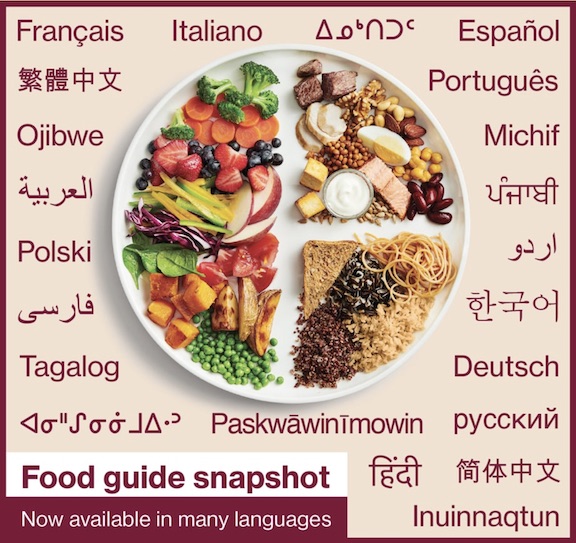 Each person, depending on their financial condition, can always find a place to meet friends or just have dinner.
Each person, depending on their financial condition, can always find a place to meet friends or just have dinner.
If you wish, you can arrange for yourself culinary tours to various national restaurants. My experience quickly convinced me that it is best to make such excursions with a guide. Despite the fact that the menu is sometimes accompanied by photographs and the waiter is ready to answer all your questions, seemingly quite ordinary-looking dishes can have the most unexpected taste. At first, cognitive experiments sometimes ended for me with a test of good manners. nine0003
There is also a Russian restaurant in Vancouver with a traditional samovar and herring under a fur coat. By the way, having dinner in a Russian restaurant is a very expensive pleasure.
On Sunday afternoons, queues line up at some Chinese restaurants. The fact is that here you can enjoy a dish that, like the famous white Bavarian sausages, is served only until a certain time. This is dim sum - a dish a little like manti with shrimp or pork. A somewhat unusual dish, in my opinion, but after tasting it, you become a truly dim sum fan. nine0003
A somewhat unusual dish, in my opinion, but after tasting it, you become a truly dim sum fan. nine0003
The most popular Canadian restaurants are Cactus club and Boathouse . These restaurants are usually located either on very busy streets or on the ocean, where the view is great. It is very difficult to talk about any design due to the lack of it. Huge panoramic windows exploit the beauty of the landscape, many tables are very close to each other. And a terrible draft! The menu includes fish dishes, steaks and, of course, hamburgers. And all this is quite expensive. nine0003
A special story about a special place in Vancouver
One of the most popular places in Vancouver, the Italian ice cream factory attracts people not only because everyone loves ice cream, but also because it can satisfy the most exotic taste cravings. Representatives of different nationalities can try ice cream made from fruits, drinks and even spices familiar in their country. The fact is that the factory produces about five hundred (!) varieties of ice cream. Entering this temple ice cream ( and ), you can try for free and as many times as you like, until you are stopped by the limits of decency or finally made a choice. The walls inside the building are decorated with greeting words in dozens of languages. There is also a Russian “Welcome” among them. At this celebration of life, children and sometimes adults, moving from window to window, dance to the groovy music. Nearby, in a small alley decorated with garlands and flowers, you can eat a coveted ball / two / three ice creams. All around you can hear speech in English, Russian, Chinese, Polish, Italian, French ...
Entering this temple ice cream ( and ), you can try for free and as many times as you like, until you are stopped by the limits of decency or finally made a choice. The walls inside the building are decorated with greeting words in dozens of languages. There is also a Russian “Welcome” among them. At this celebration of life, children and sometimes adults, moving from window to window, dance to the groovy music. Nearby, in a small alley decorated with garlands and flowers, you can eat a coveted ball / two / three ice creams. All around you can hear speech in English, Russian, Chinese, Polish, Italian, French ...
Once I was watching a local cooking show and couldn't believe my eyes. Professional cooks competed in the ability to fry chicken wings in boiling oil, make mashed potatoes and boil carrots. The question I asked myself earlier is “Maybe like a Canadian cooking class?” - dropped by itself.
If you find an error, please highlight the text and press Ctrl+Enter .
Canadian Diet 2019: How Government Guidelines Revolutionized
Health
© Ella Olsson/Unsplash
Author Frida Moreva
January 31, 2019
Canada has released a food guide for this year. Unlike other similar guides, it does not contain food consumption norms and a strict menu. At the same time, many recognized it as the most useful. We figure out what tips Canadians should remember.
The revolutionary nature of these recommendations is that, for the first time, such a document does not mention meat as an essential source of essential nutrients. Moreover, nutritionists recommend looking for sources of protein in plant foods. This recommendation is reasonable not only from the point of view of health, but also from the point of view of ecology: animal husbandry causes much more damage to the environment than crop production. nine0003
Advertising on RBC www.adv.rbc.ru
Same story with fats. Use cold-pressed vegetable oils, such as olive, coconut, grapeseed. They contain many healthy unsaturated fats that lower cholesterol levels, help fight inflammation, and strengthen the body. Be careful with animal fats.
Use cold-pressed vegetable oils, such as olive, coconut, grapeseed. They contain many healthy unsaturated fats that lower cholesterol levels, help fight inflammation, and strengthen the body. Be careful with animal fats.
© Joanna Kosinska/Unsplash
Whole grains are listed as an important source of fiber and nutrients: healthy carbohydrates, protein, and multiple vitamins and minerals. In addition, whole grains help control appetite and maintain normal blood sugar levels.
Milk and dairy products are also not included in the mandatory list. It is believed that everything you need can be obtained in an alternative way. Indeed, the habit of drinking latte or eating porridge with milk often is really just a habit that after a couple of months easily transforms into a breakfast with americano and oatmeal on the water. As far as nutrients are concerned, a wide selection of plant-based “milk” (nuts and grains) fortified with vitamins allows you to get them in the usual way.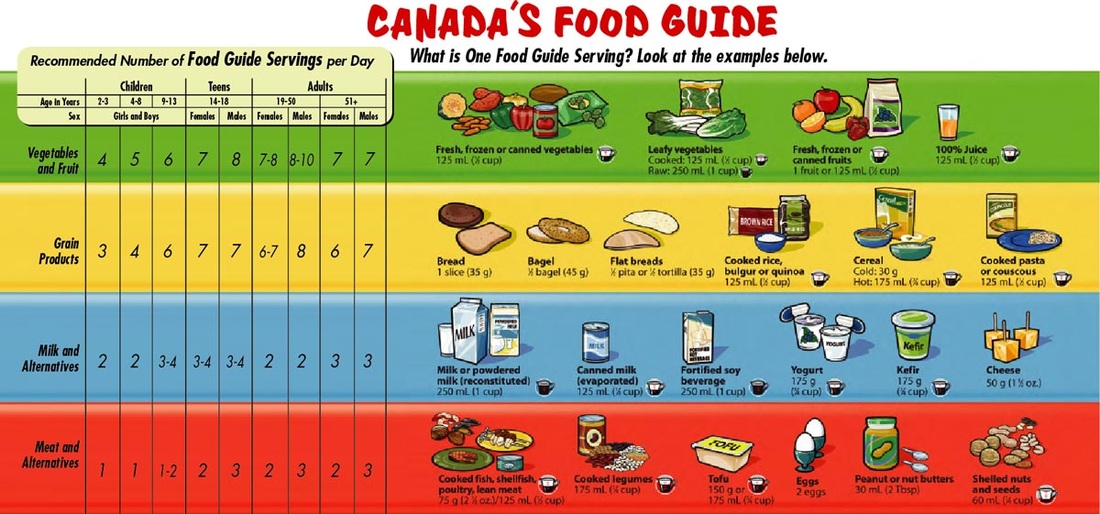

 Otherwise, they will fill up and won’t want to eat solid foods. Too much milk can also lead to iron deficiency anemia.
Otherwise, they will fill up and won’t want to eat solid foods. Too much milk can also lead to iron deficiency anemia.




